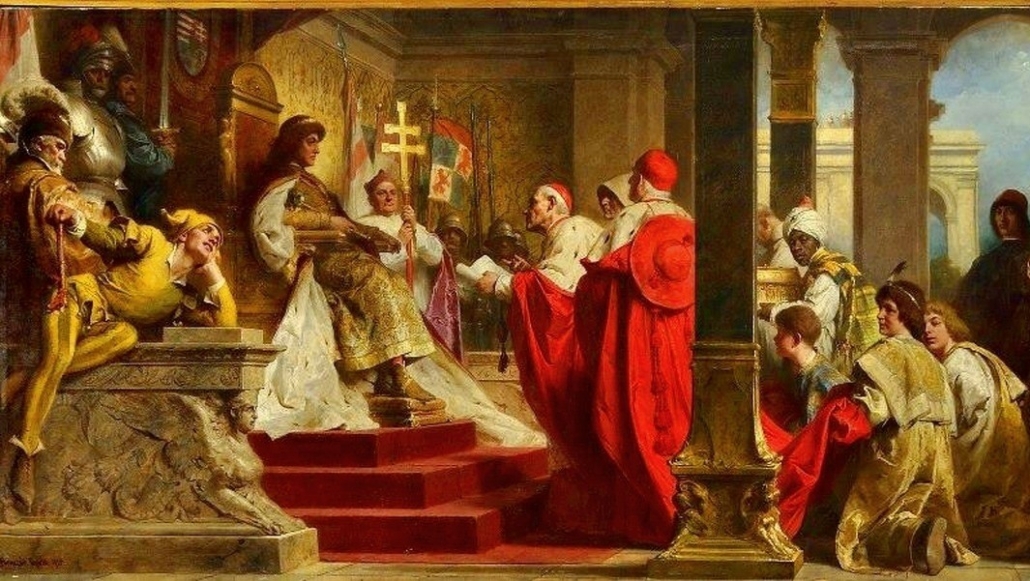Unbelievable finding: the genetic heritage of the Hunyadi family has been discovered!
We have reported about a similarly incredible discovery not long ago. It was about an 18th century map that may help find the secret tomb of Árpád, the Conqueror. Now, another historical finding has come to light. Endre Neparáczki and 19 other researchers published a research article that details how the genetic heritage of the Hunyadi family was discovered.
The Hunyadi family
The Hunyadis are one of the most influential families in the history of Central Europe in the 14th to 16th centuries. Johannes Hunyadi (János Hunyadi – DNH editor), a Turk-beater who rose to become governor of the Kingdom of Hungary, established the family’s reputation.
His second son, Matthias Hunyadi (Mátyás Hunyadi – DNH editor), was chosen to rule the Kingdom of Hungary in 1458. The Hunyadi family was of unknown ancestry. In addition, his illegitimate son John Corvinus (János Corvin – DNH editor) was denied the crown and Matthias failed to found a dynasty because he had no legitimate heir. His grandson, Christophorus Corvinus (Kristóf Corvin – DNH editor), died in infancy. This ended the direct male line of the family.
- Read also: Sensational discovery! An 18th-century map may help find the secret tomb of Árpád, the Conqueror
Researchers used next-generation sequencing technology
Using next-generation sequencing technology, a group of Hungarian researchers have sequenced the whole genomes of Johannes Corvinus and Christophorus Corvinus as part of an interdisciplinary study. Both carried the Y chromosome haplogroup E1b1b1a1b1a6a1c ∼, which is widespread in Eurasia, the finding writes. The father-son relationship has been verified by means of the classical STR method and whole-genome data.
Christophorus Corvinus belongs to the rare and sporadic T2c1+146 mitochondrial haplogroup, which is most common in the Mediterranean area. His father belongs to the T2b mitochondrial haplogroup, which is widespread in Eurasia. Both are consistent with the known origins of the mothers. The archaeogenomic analysis showed that Corvinus had an ancient European genome composition.
On the basis of the reported genetic data, it will be possible to identify the genetic heritage all the other members of the Hunyadi family, whose only known grave site is known. However, they rest together with several other skeletons.

Read alsoThe most important Hungarian winter traditions – PART I.
Source: Endre Neparáczki et al.: The genetic legacy of the Hunyadi descendants
please make a donation here
Hot news
What happened today in Hungary – 26 July, 2024
Drama: number of births in a 20-year low in Hungary
Yay or nay? – 6 odd Hungarian delicacies that make our skin crawl
Budapest tourism “exploded” this past weekend
Container transport in Budapest may stop: How will this affect Hungarian economy?
Minister: Hungary will protect its territory by every means possible





6 Comments
Interesting Research.
J’ai une relation génétique avec christophe hunyadi.
I have 2 Genes of the E1b1b1a1b1a6a1c, one of which reads Hunyadi Sample. I’m a pretty light featured guy. Is there anything suggesting Sarmatian Origins? I have other Sarmatian origins that these Genes alone. One of the names in my family means Vesuvius when Translated from Armenian. Is there any possibility this is of Sarmatian origin and could also be from the same people , could possibly be the real origins of Tigranes the Younger?
Thanks,
Jon
Here are my dna relatives. E1b1b1a1b1a6a1c – Voyk Hunyadi (1419)
E1b1b1a1b1a6a1c – John Hunyadi (1456)
E1b1b1a1b1a6a1c – Matthias Corvinus (1490)
According to mytrueancestry, I am also related to this family. Interesting to say the least. I thought I was more Italian.
I have relation to these groups as well. A strong connection from Mytrueancestry as my predominate paternal haplogroup in E1b1a is usually linked to West Africans. Many people would not like to hear this based on personal bias. But the E branch of DNA groups are strongly north, west, central, and south African. So I see this family lineage as being of missed ancestry. It is surprising to know how diverse the world has been for millions of years.